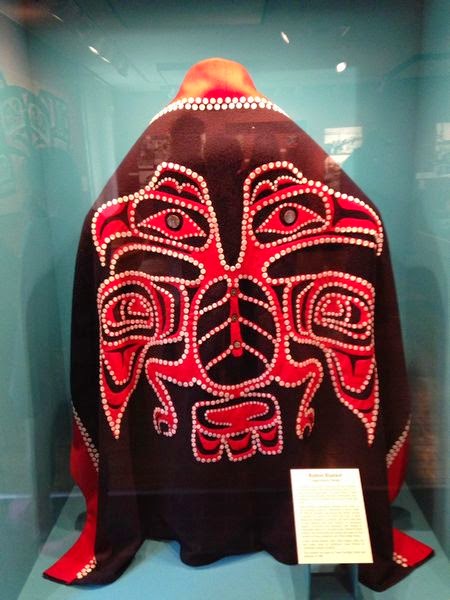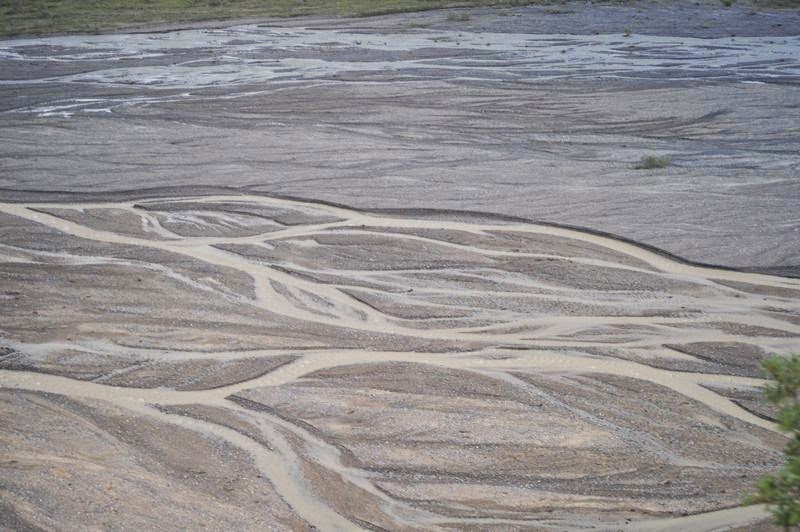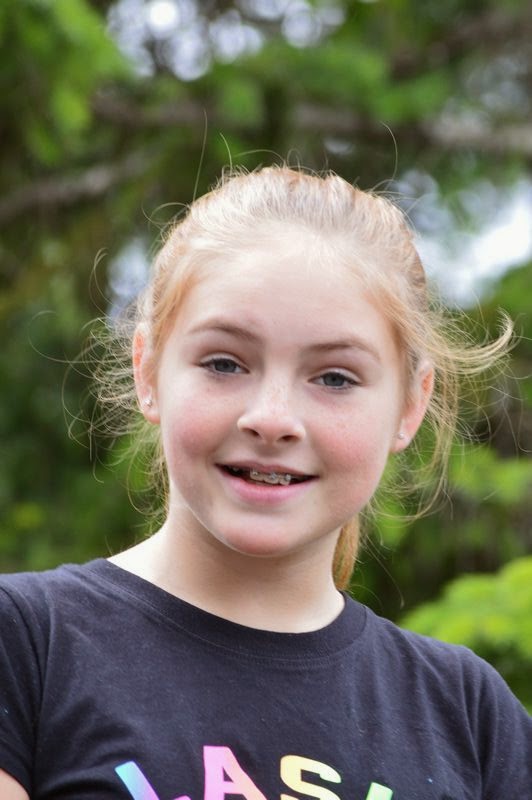Early this year my fantasy was to take a summer cruise with Dawn and her family, and Brett and Michelle. Amazingly, the stars aligned ... almost. Dawn and Bob were able to schedule vacations for the same time. However, Brett and Michelle had employment responsibilities that didn't fit with the timeline. Thus, Dawn, Bob, Brandon, Sophia and I headed out for Holland America's Alaska 12-day cruisetour the end of June. Next year I look forward to doing something with Brett and Michelle.
What follows are the highlights of our Alaskan cruise and land tour to Denali, accompanied by many photos.
PRECRUISE - SATURDAY, JUNE 28
Our flight from Cleveland to Vancouver, BC, with a connection in Toronto required us to be at the Cleveland airport at 4:30 AM. Therefore, we spent the night of the 27th at the Crowne Plaza hotel near the airport. Great accommodations and outstanding early evening dinner. Plus, for a minimal upcharge for one room, we had free parking for up to two weeks. On Saturday, we were up at 3:00 AM, took the complimentary hotel shuttle to the airport at 4:00 and checked our bags near 4:30. Our flights from Cleveland to Vancouver were routine.
 |
| 4:00 PM Vancouver Time - Lights Out |
SAILING AWAY - SUNDAY, JUNE 29
Breakfasts were gotten at Starbucks and McDonalds in the shopping area below the hotel. At 10:30, a HAL representative walked those who'd stayed at the hotel the previous night across the street to the terminal where we went through security, and then Customs, before finally receiving our cabin key cards, and for Sophia, a red wristband which identified her as being under 13. In the event of an emergency on the ship, such banded children, if not with their parents, are taken by a crew member to the life boat station imprinted on the band to be reunited with family.
While we waited for luggage to be delivered to our cabins, we went to the Lido for lunch. It took several food encounters before Brandon and Sophia comprehended that they didn't have to pay for anything they might want to eat. In fact, if they really liked something, they could have another. Conversely, if they tried something they didn't care for (e.g., anchovies), they could order something else. Nor did they need cash to buy merchandise. They each had a cabin credit allowance of $50. It was interesting to note how they chose to spend that credit in the days that followed.
Following lunch we explored the ship -- the Rotterdam restaurant, library, spa, shops that would open when we set sail, and the children's clubs -- ages 8 through 12 for Sophia and 13 through 18 for Brandon. Sophia refused to participate in her group's club since the age of the attendees was closer to 8 than 12. She went to Brandon's with him but was not allowed to remain when her red wristband was seen by the attendant. Brandon didn't return after the initial visit, saying that he didn't share the same interests as the others they'd met there. He and Sophia would do things together, or as the days passed and confidence grew, find things to do independent of each other.
c.jpg) |
| Ouch! |
 |
| Sailing away from Canada Place |
As the time to leave port approached, we stood on the Navigation Deck where we remained as we sailed under Lion's Gate Bridge and our cruise began.
AT SEA - MONDAY, JUNE 30
 |
| Dressed for dinner on formal night |
Bob spent most of his day on the verandah, taking in the scenery and recording much of it on the camera. Dawn, the kids and I shopped, but anticipating lower prices later in the week, bought nothing! Dinner was formal, expected on leisurely days spent at sea. Although I didn't go to the evening's entertainment, comments made by Dawn and Sophia led me to believe the show was corny. Fortunately, later in the week, there were two entertainers, both comedians who weren't employees of the ship, that were, in fact, entertaining. The HAL dancers and singers -- or perhaps it was their programs -- were laughable. For the wrong reasons.
KETCHIKAN - TUESDAY, JULY 1
We had booked no excursions in Ketchikan, planning instead to walk through the town and visit shops.
But on Monday evening, one of the crew from the Great Alaskan Lum-berjack Show did a short introduction of the skills used in the Lumber-jack program. Since the venue was an easy walk from the ship and the rain which welcomed us to Ketchikan had ended, we attended and enjoyed the show very much.
Bob had noticed folks driving golf cart-type 4-seaters, so after the show, he rented two and we went in search of Bald Eagles but didn't see any. We also visited Totem Heritage Center, a collection of totem poles, woven baskets and robes.

Back on foot, we hit the souvenir shops. Sophia bought sweatpants, a T-shirt and shorts, Bob and Dawn found rain jackets and Brandon found a rock shop where he got several at give-away prices.
 |
| The ax is in the air between the target and the thrower |
Bob had noticed folks driving golf cart-type 4-seaters, so after the show, he rented two and we went in search of Bald Eagles but didn't see any. We also visited Totem Heritage Center, a collection of totem poles, woven baskets and robes.
 |
| Button Blanket, a ceremonial robe |
 |
| Woven baskets |

Back on foot, we hit the souvenir shops. Sophia bought sweatpants, a T-shirt and shorts, Bob and Dawn found rain jackets and Brandon found a rock shop where he got several at give-away prices.
Back on board, Dawn and Brandon attended an afternoon Indonesian tea while Sophia, Bob and I stood at the rail on the deck awaiting sail away. Dinner was eaten in the Lido since we failed to go early for "anytime" dining. The food was a great disappointment to me, and I vowed to eat early, in the Rotterdam dining room, the remainder of the cruise!
 |
| Sailing away from Ketchikan |
JUNEAU - WEDNESDAY, JULY 2
 |
| Dockside in Juneau |
The day started with spritzing rain, but by the time our bus shuttle reached our destination, the Mendenhall Glacier, it had stopped. We enjoyed the mile or so walk to Nugget Falls where we took photos before returning to port. We got a snack at the Red Dog Saloon and then spent some time visiting more souvenir shops. Dinner was at Table 112, a spot we requested each subsequent evening. Although our waiter (or his understanding of English) left much to be desired, other attendants, especially Alit, were entertaining. By the time of our last dinner there, Alit had made three origami animals for Sophia.
 |
| Mendenhall Glacier |
 |
| Menhenhall Glacier on the left, Nugget Falls on the right |
SKAGWAY - THURSDAY, JULY 3
 |
| Above the tree line where vegetation is sparse |
As we neared our destination, Caribou Cross- ing, we paused to see Carcross Desert, eleva- tion 2,160 feet, which measures about one square mile. It is actually a series of sand dunes. The area's climate is too humid to be considered a true desert. The sand was formed during the last glacial period, when large glacial lakes formed and deposited silt. When the lakes dried, the dunes were left behind.
On our return to the ship, we stopped in Carcross before continuing on to board a train for the remainder of our trip back to Skagway.
 |
| A bear-proof (and in some instances, people-proof) trash bin. |
 |
| On the train through Tormented Valley |
GLACIER BAY - FRIDAY, JULY 4
Brandon had "complained" that he just wanted to sleep, and now he could with a day at sea. (But he didn't!)
Once again, it was raining and it continued off and on through the day. (We learned later in the trip that this spring had been one of the rainiest Alaskans have seen in several years.) During the day Bob, while at his post on the verandah, spied some small whales and several seals. We even had a sea gull visitor!
As we got closer to Margerie Glacier, the size and number of ice bergs increased. Unlike Hubbard Glacier which I visited in 1998, Margerie calved often during our two hours there. Those of us in quiet areas could hear a sound like a gunshot and we would watch the area the sound came from, waiting to see part of the glacier fall away. Most days the temperature didn't rise above 60, but being so close to the glacier made this day seem colder!
 |
| The blue water is runoff from the waterfall; the grey water is melt from the glacier and is heavy with silt and minerals |
 |
| The face of Margerie Glacier |
AT SEA - SATURDAY, JULY 5
A day at sea to do laundry, shop (but there was nothing at the drastically reduced prices I had hoped for) and pack. Before going to bed, suitcases, including those carry-ons permitted by the airlines, were to be tagged for the next destination. Only small bags (suggested to measure no more than 11"x17"x4") to contain medicine and valuables such as jewelry, cameras, etc. were to be carried on the train taking us to Anchorage where our adventure would continue.
TO ANCHORAGE - SUNDAY, JULY 6
.jpg) |
| Headed north out of Seward along the Kenai Lake |
It was a long ride to Anchorage, one that began by rising between 4:30 and 5:00 in order to have breakfast before leaving the ship. About 6:15 we walked to the train and boarded the rail cars to which we'd been assigned. This was another of what had become unfavorably known as "another 8-hour day". Both Brandon and Sophia had learned by now to listen to music on their iPods when the ride became uninteresting. Rain began as we approached Anchorage and continued on and off through the afternoon.
 |
| Clouds cover the mountains leaving Seward |
 |
| Trees, trees, trees |
 |
| A glacier, possibly Spencer |

 |
| And another glacier, or perhaps this is Spencer! |
 |
| Mountains rise above the valley |

ON TO DENALI - MONDAY, JULY 7
Another train ride, this one with domed windows on the upper level and a dining room below. We were on board about 9:30 and arrived in Denali close to 5:30 (another 8-hour day).
On the ride, a narrow hori- zontal strip of Mount McKinley (aka Denali) was visible at one vantage point.
Brandon questioned what we were going to do the following day, apparently hop- ing to sleep in. We'd been telling him the tour of the park would take a "few hours" without being specific. Then one of the passengers sitting near us, apparently trying to help, said, "6 to 8 hours...." Brandon's reaction had the adults around us laughing out loud. He said he'd really enjoyed the trip, but just wanted to stop. We told him it would stop once we got home. (We had to admit we adults were ready to stop, too.)
There are five trees common in Alaska: the white spruce, a pine which rises tall and slender; the black spruce which is short and spindly, appearing to be dead or dying; the paperbark birch, quaking aspen and the cottonwood. In Alaska, these grow in what is referred to as taiga, evergreen forests with shorter, warm summers and long winters. But much of Alaska is tundra, either alpine tundra where trees have been replaced by shrubs, moss and lichen or arctic tundra, where nothing grows. On this portion of our journey we saw all five trees and all three zones.

.jpg) |
| Denali is visible in the middle of the picture, its peak touching the horizontal white cloud just above it. Compare its height to the 4,000' dark mountains in the foreground, below it. |
Brandon questioned what we were going to do the following day, apparently hop- ing to sleep in. We'd been telling him the tour of the park would take a "few hours" without being specific. Then one of the passengers sitting near us, apparently trying to help, said, "6 to 8 hours...." Brandon's reaction had the adults around us laughing out loud. He said he'd really enjoyed the trip, but just wanted to stop. We told him it would stop once we got home. (We had to admit we adults were ready to stop, too.)
 |
| White Spruce |
 |
| Glacier-fed river through the trees |
 |
| Alpine tundra - a beaver family's dam in the middle of a pond |

 Our rooms were in the McKinley Chalet Cottonwoods building. Basic, but adequate, accommodations. After we'd looked at our rooms, we went outdoors and found a group of people watching a female moose eating leaves from a tree along the river, only a few yards away. We were told she had a calf nearby and apparently had come to the grounds from across the river, perhaps trying to escape the pursuit of a bear. We saw her and the calf the next morning, on the way to meet our tour group.
Our rooms were in the McKinley Chalet Cottonwoods building. Basic, but adequate, accommodations. After we'd looked at our rooms, we went outdoors and found a group of people watching a female moose eating leaves from a tree along the river, only a few yards away. We were told she had a calf nearby and apparently had come to the grounds from across the river, perhaps trying to escape the pursuit of a bear. We saw her and the calf the next morning, on the way to meet our tour group.
DENALI - TUESDAY, JULY 8
We had the fourth starting time for the Tundra Wilderness Tour, 5:50 AM. It was to be another 8-hour day. At this time of year, the sky doesn't darken that far north, so the day was bright when we boarded our city-type bus for the trip 60 miles into Denali's interior. We were instructed to watch for caribou, moose, grizzly bears, dall sheep and the golden eagle. (The Bald Eagle doesn't nest here because of the lack of its food source.) We saw them all, but a telescopic lens was needed to verify those white spots on the top of the mountain were dall sheep, not snow. As for seeing Denali, only another narrow strip with no possibility of imagining what the whole thing would look like. Even having our guide tell us that four of the mountain beside us would fit inside Denali made it difficult to imagine.
The photo of the landscape illustrates the U-shape of the valleys that were carved by receding glaciers.
 |
| There were many "braided" rivers whose meandering could, and did, change overnight |

Only a few inches of soil on which the grass could grow
 |
| This "black" mountain was next to the brown one above |
 |
| Brown Bear |
 |
| Grizzly Bear |
 |
| Caribou |
 |
| Golden Eagle |
 |
| Dall sheep, 3 of them. (They were very far away>) |
FAIRBANKS - WEDNESDAY, JULY 9
A bus picked up our group of 50+ for the 6-hour drive to Fairbanks. Finally, not a drop of rain all day! Our entertainment for the afternoon was a quick lunch followed by a short riverboat cruise (http://riverboatdiscovery.com) with a pause, first, at kennels where Iditarod dogs are trained and then at a replicated fish camp where we were shown how salmon are caught, dressed, and hung to dry. We also left the boat for presentations from young Athabascans who explained how the their ancestors had hunted, dressed and lived.
Along the river were stands of cottonwood, aspens and white spruce.
The dogs at the Butcher kennels are tied to the training vehicle and ready to pull. The dogs are bred for strength, endurance and love of the run. They look like "mutts", and are not the huskies or malamutes we usually think of as sled dogs.
A model fishing camp illustrates where the athabaskans lived, how they caught fish, cleaned and hung them to dry before smoking them and then transferring them to the cache.
The dogs at the Butcher kennels are tied to the training vehicle and ready to pull. The dogs are bred for strength, endurance and love of the run. They look like "mutts", and are not the huskies or malamutes we usually think of as sled dogs.
A model fishing camp illustrates where the athabaskans lived, how they caught fish, cleaned and hung them to dry before smoking them and then transferring them to the cache.
Pelts used to make clothing include the wolf, lynx, wolverine, fox, beaver, otter and mink.

One of the young women modeled a coat made of several different animal pelts and embellished with beading that is valued at $20,000.
After the riverboat cruise we were all taken to the hotel. While others went to their rooms to spend the night, we ate dinner, gathered our luggage, and sat in the lobby, waiting for the shuttle to take us to the airport for our red-eye flight home. We were back in Massillon about 5:30 PM on Thursday, July 10.
Photos taken along the way...
.jpg) |
| This is what happens when a person gets up at 4:30 AM |
.jpg) |
| Bunny made the trip as well |


















.jpg)


















.jpg)






.jpg)
.jpg)
.jpg)
.jpg)
.jpg)
























